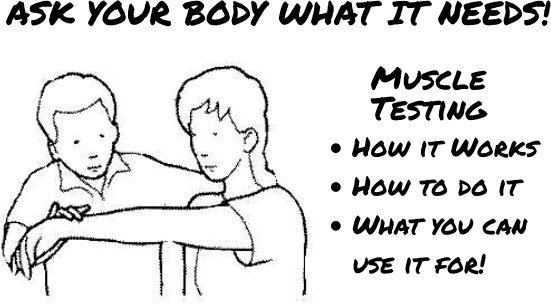NOTE: if you are considering trying the keto diet, please discuss this with me at your session or your regular health care professional so they can assess whether it is right for you!
The ketogenic diet is high fat, reduced protein and low carbohydrate, and it trains your body to use ketones for energy instead of glucose (a state called ‘ketosis’ or ‘keto-adapted’). Ketones are made when your body breaks down fat for energy. Nutritional ketosis is very different from diabetic ketoacidosis which is a dangerous diabetic condition, and why many mainstream health professionals may not agree with this way of eating. But this diet has many benefits and can help many different conditions.
This is a basic overview of the diet.
Tips:
- Obtain good quality foods and products from good sources, organic as much as possible
eat a good variety of foods - aim to be plant-based (75-80% of your food is from plants) not only fruit/veg, this can be nuts, seeds, avocado, olive, oils, coconut, etc
- aim for one meal a day to be raw
- drink plenty of water and clear fluids (can add a slice of lemon)
- organic ground coffee is allowed in moderation
Intermittent Fasting
The effects of the ketogenic diet can be enhanced by intermittent fasting. This is easy once you are in ketosis which can take anything from a few days to a few weeks. You will need to be extra-strict in the first phase until you can regularly see a good ketone level which is fairly steady (ie. you are keto-adapted), and you will all of a sudden feel an uplift in your mood and energy level. You can achieve intermittent fasting by:
- skipping breakfast and eating only lunch and dinner with a few snacks if needed, in an ‘eating window’ of 6-8 hours. This gives you a daily fast (with clear fluids only) for 16-18 hours.
- Lengthening the time in between meals, eg 5 hours (with no snacking).
Get used to the diet for a week or so before introducing intermittent fasting!
Testing
You can test for ketones in your urine, breath and blood. There are various monitors available, and also keto urine test strips on Amazon. It is recommended you test regularly to see how your body is reacting to certain foods and you will then be able to adjust the diet according to your own metabolism and needs.
WHAT TO EAT
FATS (UNLIMITED): Eat a variety, but try to opt more for healthier options:
Eggs, butter, coconut oil, olive oil, nut and seed oils (cold), double cream, clotted cream, nuts, nut butters and nut flours, avocados, olives, animal fats
Keto coffee: organic ground coffee, 1 teaspoon coconut oil, double cream, stevia or xylitol to taste!
PROTEIN: Eat 0.5g-1g of protein per Kg of body weight.
Excessive protein will be converted to glucose by the liver and destroy your ketosis! So if you go for the average of 0.75g per Kg body weight and you weigh 80Kg, you need 60g protein per day. Not enough could cause tissue catabolism (breaking down protein body mass for energy). As an average guide:
100g meat (in general) provides 24g protein
100g fish (in general) provides 18g protein
100g full fat yoghurt provides 5g protein
100g cheese provides 22g protein
CARBOHYDRATES:
All carbohydrates should come from a wide variety of whole plants:
Unlimited: Green vegetables, peppers, onions, garlic, herbs
Limited: Sweet potatoes, organic oats, peas, root vegetables, tomatoes
Only have 1 average portion 2-3 times per week of the limited carb foods. You will obtain ketosis quicker if you leave these out at first.
Fruits: The following are based upon 100g servings:
¼ daily intake: Strawberries, papaya, grapefruit, figs, guava
½ daily intake: Pomegranates, kiwi, pears, pineapples, apples, blueberries, blackberries, raspberries, peaches/nectarines/apricots, cherries, tangerines, plums, water/honeydew melons
Whole daily intake: banana, grapes, mango
Grains: Have little or none (preferably) of the following:
Brown rice, amaranth, buckwheat, millet, quinoa, corn
Oats: can often be eaten 2-3 times per week with no effect in ketosis once it is established, but check as it is not often the case for everyone!
Something Sweet
Natural stevia is the most keto-friendly sweetener, however xylitol, honey and maple syrup can be used in small quantities without affecting ketosis, if taken into account when taking other carbs.
Something Naughty!
Dark organic red wines (preferably sulphite free/no added sulphur/low sulphur) such as Burgundy often do not stop ketosis if taken in moderation (1-2 glasses per week), once you are stable in ketosis (but test for this as it can depend on the individual).
MEAL SUGGESTIONS
Snacks / breakfasts
Little gem lettuce leaves with peanut butter (use the lettuce leaf as a cracker!)
Just a spoonful of peanut/nut butter (keeps you going for a while if in ketosis!)
Boiled egg with celery/cucumber/carrot soldiers
Omelette with peppers/mushrooms/onion (do not add milk and add lots of butter!)
Porridge made with water, add cream and stevia, xylitol or manuka honey (or berries) to sweeten
Fried eggs in coconut oil, fried tomatoes and mushrooms in butter and bacon
Carrot, celery and cucumber sticks with guacamole (check ingredients if bought)
Gluten-free falafel (check ingredients!) with houmous and salad
Egg/chicken/beef/bacon/salmon salad with apple cider vinegar dressing
Smoked Mackerel with tomatoes fried in butter
You will find that snacks need only consist of a spoonful of nut butter or coconut oil, or a slice of butter which will keep you going until next mealtime!
Meals
Main protein (Any fish or meat, preferably fattier cuts such as ribeye, lamb cutlets, pork belly, streaky bacon, chicken thigh with skin) with 3 types of steamed veg (2 green, 1 coloured) drizzled with garlic butter
Main Protein (as above) with abundant leafy salad and small serving of beetroot
Spaghetti bolognese – make bolognese with a passatta base and fresh garlic, parsley and basil, serve with ‘Slim Pasta’ or spiralised courgette ‘spaghetti’ (soften in boiling water for a few minutes)
Curry and rice – use passatta base for curry, add ground almond and dessicated coconut to sweeten, eat with poppadoms and cauliflower rice (whiz florets in a blender and dry fry to warm through)
Roasted veg (sweet potato/butternut squash, red peppers, red onions, courgettes, aubergine, mushrooms, coconut oil and herbs to your taste) with steamed green veg
Effects
You may find that you feel a bit worse until you obtain ketosis. Then you will feel great!
Symptoms that you have may worsen in the short term, but not necessarily so.
You will probably lose weight fairly quickly, averaging about 1lb per day but this will slow a little. If you hit a plateau with still more weight to lose to get to a healthy weight, have a ‘carb day’ where you double your carb intake (or just have a treat). This can often be done regularly without effecting ketosis can have some benefit (eg 1 day per week, 1 weekend per month). If you still plateau it is possible that your weight is either as it is, or that there is another issue such as trapped emotions causing your weight to not shift. This would be a good time to see a kinesiologist for advice.
Always eat your carb allowance or you may introduce complications!


